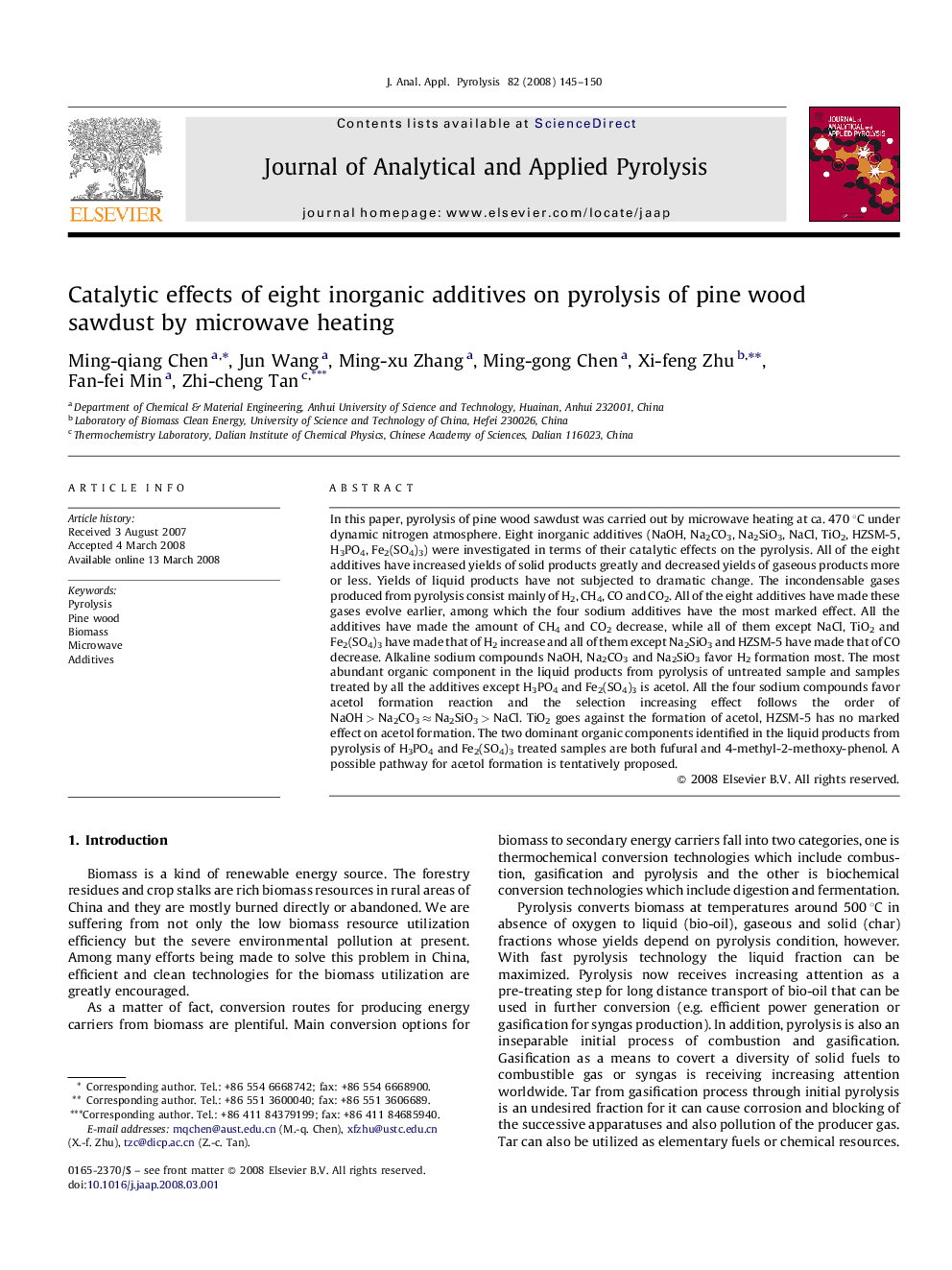| Article ID | Journal | Published Year | Pages | File Type |
|---|---|---|---|---|
| 1197698 | Journal of Analytical and Applied Pyrolysis | 2008 | 6 Pages |
In this paper, pyrolysis of pine wood sawdust was carried out by microwave heating at ca. 470 °C under dynamic nitrogen atmosphere. Eight inorganic additives (NaOH, Na2CO3, Na2SiO3, NaCl, TiO2, HZSM-5, H3PO4, Fe2(SO4)3) were investigated in terms of their catalytic effects on the pyrolysis. All of the eight additives have increased yields of solid products greatly and decreased yields of gaseous products more or less. Yields of liquid products have not subjected to dramatic change. The incondensable gases produced from pyrolysis consist mainly of H2, CH4, CO and CO2. All of the eight additives have made these gases evolve earlier, among which the four sodium additives have the most marked effect. All the additives have made the amount of CH4 and CO2 decrease, while all of them except NaCl, TiO2 and Fe2(SO4)3 have made that of H2 increase and all of them except Na2SiO3 and HZSM-5 have made that of CO decrease. Alkaline sodium compounds NaOH, Na2CO3 and Na2SiO3 favor H2 formation most. The most abundant organic component in the liquid products from pyrolysis of untreated sample and samples treated by all the additives except H3PO4 and Fe2(SO4)3 is acetol. All the four sodium compounds favor acetol formation reaction and the selection increasing effect follows the order of NaOH > Na2CO3 ≈ Na2SiO3 > NaCl. TiO2 goes against the formation of acetol, HZSM-5 has no marked effect on acetol formation. The two dominant organic components identified in the liquid products from pyrolysis of H3PO4 and Fe2(SO4)3 treated samples are both fufural and 4-methyl-2-methoxy-phenol. A possible pathway for acetol formation is tentatively proposed.
